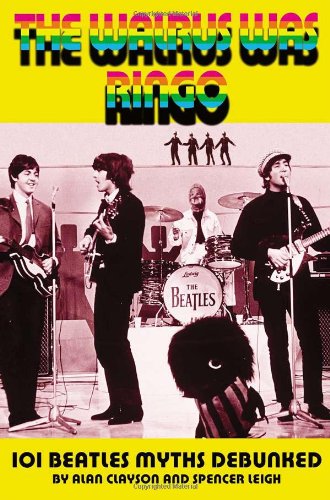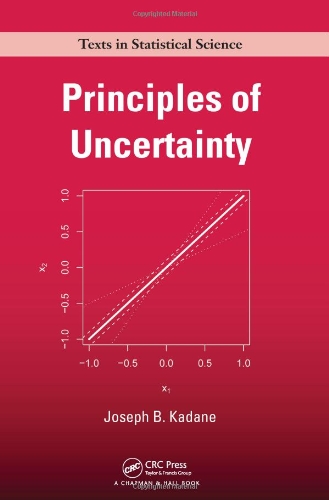- 2 402 202 книги
- Поиск
libcats.org










Classical Topology and Combinatorial Group Theory
John StillwellThis is a wonderfully intellectual, semi-historical approach to classical topology.
Chapter 0 gets some fundamentals out of the way. Chapter 1 is very intriguing and contains lots of ideas. First we are given a taste of the Riemann surfaces of complex analysis. These are complemented by the nonorientable surfaces, and it all leads to the classification of surfaces, which is achieved through the fundamental group and the realisations of surfaces as polygons with identifications, and this in turn leads picturesquely to covering surfaces. These simply and concisely presented ideas provide the seeds for much of the later chapters. The short chapter 2 sets up the two-way connection between topology and combinatorial group theory, which proves fruitful when the fundamental group grows into two chapters of its own (3 and 4). Then follows a sort of supplementary chapter 5 which touches on homology theory (otherwise largely neglected, but with good reason, Stillwell argues) to motivate abelianisation, which is the method we use to formally tell the fundamental groups of all surfaces apart. Chapters 2-5 were a bit slowed down by foundational issues, but now in chapters 6-8 it's all topology all the time. There are nice accounts of the classical theories of curves on surfaces (chapter 6) and knots (chapter 7). In chapter 8 we see how some of our previous ideas carry over to 3-manifolds. But ultimately 3-manifolds are deep water, with the homeomorphism problem being unsolved and all. Neither would it help to move up to 4-manifolds or higher, but at least that's not our fault so to speak because there the homeomorphism problem is in fact unsolvable. The homeomorphism problem and other fundamental problems are essentially algorithmic (i.e., given two spaces, decide whether they are different or the same) so unsolvability (non-existence of algorithms) is indeed a force to be reckoned with, so it is given its own chapter 9, naturally culminating with the unsolvability of the homeomorphism problem.
There are many ways to destroy the soul of topology. Stillwell says in the preface: "In most institutions it is either a service course for analysts, on abstract spaces, or else an introduction to homological algebra in which the only geometric activity is the completion of commutative diagrams." Stillwell protects us from such dangers by his emphasis on low dimensions, his insistence on the fundamental group as the best unifying tool, visualisation and illustrations, and his great respect for primary sources. The latter is reflected in frequent references and in the commented, chronological bibliography, which is very useful.
Chapter 0 gets some fundamentals out of the way. Chapter 1 is very intriguing and contains lots of ideas. First we are given a taste of the Riemann surfaces of complex analysis. These are complemented by the nonorientable surfaces, and it all leads to the classification of surfaces, which is achieved through the fundamental group and the realisations of surfaces as polygons with identifications, and this in turn leads picturesquely to covering surfaces. These simply and concisely presented ideas provide the seeds for much of the later chapters. The short chapter 2 sets up the two-way connection between topology and combinatorial group theory, which proves fruitful when the fundamental group grows into two chapters of its own (3 and 4). Then follows a sort of supplementary chapter 5 which touches on homology theory (otherwise largely neglected, but with good reason, Stillwell argues) to motivate abelianisation, which is the method we use to formally tell the fundamental groups of all surfaces apart. Chapters 2-5 were a bit slowed down by foundational issues, but now in chapters 6-8 it's all topology all the time. There are nice accounts of the classical theories of curves on surfaces (chapter 6) and knots (chapter 7). In chapter 8 we see how some of our previous ideas carry over to 3-manifolds. But ultimately 3-manifolds are deep water, with the homeomorphism problem being unsolved and all. Neither would it help to move up to 4-manifolds or higher, but at least that's not our fault so to speak because there the homeomorphism problem is in fact unsolvable. The homeomorphism problem and other fundamental problems are essentially algorithmic (i.e., given two spaces, decide whether they are different or the same) so unsolvability (non-existence of algorithms) is indeed a force to be reckoned with, so it is given its own chapter 9, naturally culminating with the unsolvability of the homeomorphism problem.
There are many ways to destroy the soul of topology. Stillwell says in the preface: "In most institutions it is either a service course for analysts, on abstract spaces, or else an introduction to homological algebra in which the only geometric activity is the completion of commutative diagrams." Stillwell protects us from such dangers by his emphasis on low dimensions, his insistence on the fundamental group as the best unifying tool, visualisation and illustrations, and his great respect for primary sources. The latter is reflected in frequent references and in the commented, chronological bibliography, which is very useful.
Популярные книги за неделю:

Проектирование и строительство. Дом, квартира, сад
Автор: Петер Нойферт, Автор: Людвиг Нефф
Размер книги: 20.83 Mb

Система упражнений по развитию способностей человека (Практическое пособие)
Автор: Петров Аркадий НаумовичКатегория: Путь к себе
Размер книги: 818 Kb

Сотворение мира (3-х томник)
Автор: Петров Аркадий НаумовичКатегория: Путь к себе
Размер книги: 817 Kb

Радиолюбительские схемы на ИС типа 555
Автор: Трейстер Р.Категория: Электротехника и связь
Размер книги: 13.64 Mb
Только что пользователи скачали эти книги:

Managing cyber threats
Автор: Vipin Kumar, Автор: Jaideep Srivastava, Автор: Aleksandar Lazarevic
Размер книги: 24.49 Mb

Принципиальная схема магнитолы. Вильма-212(Схемы электронных устройств)
Автор:Категория: Радио, электроника
Размер книги: 917 Kb

The Walrus Was Ringo: 101 Beatles Myths Debunked
Автор: Alan Clayson, Автор: Spencer Leigh
Размер книги: 8.97 Mb

Principles of Uncertainty (Chapman & Hall CRC Texts in Statistical Science)
Автор: Joseph B. Kadane
Размер книги: 2.95 Mb

Активная сейсмология с мощными вибрационными источниками
Автор: Алексеев А.С., Автор: Геза Н.И., Автор: Еманов А.Ф., Автор: Кашун В.Н., Автор: Ковалевский В.В., Автор: Манштейн А.К., Автор: Михайленко Б.Г., Автор: Селезнев В.С., Автор: Сердюков С.В., Автор: Собисевич А.Л., Автор: Собисевич Л.Е., Автор: Соловьев В.М., Автор: Хайретдинов М.С., Автор: Чичинин И.С., Автор: Юшин В.И.Категория: науки о земле
Размер книги: 28.28 Mb

The Midwife- A Memoir of Birth, Joy and Hard Times
Автор: Worth JenniferКатегория: fiction
Размер книги: 443 Kb




